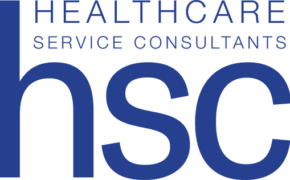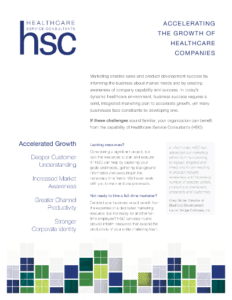Table of Contents
Last month’s blog highlighted the “era” of digital transformation. This evolution shaped both healthcare delivery and the role of the healthcare marketer. But, an emergence of digital media is only one of the forces impacting healthcare IT sales and marketing organizations.
Equally, if not more impactful, is how care delivery models and organizations have shifted over time. The digital world has created a global marketplace that increases opportunities. It’s also instigated complexity among companies with either domestic or international aspirations.
Many of the core competencies of the healthcare product marketing leader remain unchanged. Yet, commercializing and selling new technologies into today’s intricate healthcare industry calls for far deeper domain expertise. What was “adequate” before no longer meets current demands.
1. What constitutes a healthcare product marketing leader these days?
Twenty years ago, community-based, non-integrated healthcare organizations were the norm. Since, efforts to drive value-based care and realize economies of scale have generated industry-wide consolidation. National (or even multi-national) health systems and integrated delivery networks (IDNs) arose as a result.
The consequence?
A complex ecosystem for healthcare IT vendors, from a technology perspective. It has also complicated the sales and marketing process by introducing a myriad of:
- new stakeholders
- problem statements
- interactions
- decision-making bureaucracy
Today’s healthcare product marketing leader needs to know much more about an entangled and integrated health system. They must consider clinical, technical, and business management factors. This includes:
- Deep appreciation of the unique goals, challenges, and buying/influencing behaviors of stakeholders. This includes everyone across the healthcare continuum. From C-suite executives to front-line physicians, nurses, and other clinical and administrative staff.
- Multi-dimensional understanding of clinical workflow. The structure and interactions within and between clinical service lines, departments, and facilities.
- Knowledge of each unique buying process. Decision criteria across market segments and geographies. Identifying potential barriers and how to reduce them is key.
- Solid understanding of differing budget types, reimbursement models, and procurement structures across buyer segments. For example, public vs. private, independent vs. academic vs. IDN, etc.
2. What does this mean, in practice?
A broad range of expertise makes product marketing leaders the “hub” of the modern healthcare IT organization. They play both an educational and strategic role by bringing the voice of the customer to the entire organization. They may not have all the answers. But, by asking the right questions, they uncover key insights. The modern healthcare product marketing leader can steer the development of successful product, support, and sales strategies.
Developing strategic and measurable marketing objectives requires leaders to combine market and buyer dynamics with the functional and technical value propositions of their solution. These objectives reflect the business’ strategic, financial, and sales goals.
Product marketing leaders are also responsible for optimizing messaging. They must translate complex clinical interactions and technical concepts into a messaging framework that caters to each unique buyer’s journey. Messaging should communicate relevant and compelling value propositions to key decision makers and influencers.
Finally, today’s product marketing leaders must monitor the effectiveness of the marketing program. Continuous measurement will improve its ability to:
- increase brand awareness
- generate quality leads
- generate revenue
3. Owning the marketing technology stack
One of the newest and most important responsibilities of the modern product marketing leader is oversight of a robust marketing stack. A comprehensive stack provides a toolset necessary for developing, executing, and monitoring marketing activities in today’s digital ecosystem. It should include:
- Customer Relationship Management (CRM) tools to collect, track, and nurture sales opportunities
- Search Engine Optimization (SEO) to drive organic traffic and new potential customers to your website or online content
- An email platform to support direct outreach to current and prospective customers
- Social media strategy and platform to build broader awareness and foster engagement
- Experience Optimization tools that enable A/B testing; to focus and refine marketing efforts
- Analytics tools to measure effectiveness of marketing activities and quantify marketing’s contribution to sales and revenue
4. Bringing domain expertise to your organization
Many of the core principles of marketing have remained unchanged over the past 20 years. What does successful marketing in today’s healthcare ecosystem look like? A healthcare product marketing leader who is well-versed in every facet of business and healthcare operations. Functions related to these departments are especially key:
- clinical
- technical
- financial
- administrative
Product marketing leaders are an integral part of any healthcare IT organization. They share essential knowledge of market dynamics with leadership, engineering, sales, and support. They inform the development of effective and cohesive strategies. As leaders, they must also develop marketing programs that drive measurable growth in brand awareness, sales opportunities, and revenue.
Do you need to bolster your team’s healthcare domain expertise? Need help designing an actionable and measurable product marketing program? Our seasoned professionals bring decades of diverse healthcare experience. We can help take your marketing strategy—and company—to the next level. Contact us to learn more.
Photo by Markus Spiske on Unsplash




